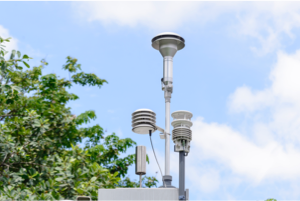microAeth® / Applications

Mobile monitoring
microAeth instruments are used to measure exposures and ambient concentrations in on-vehicle mobile studies. AethLabs’ instruments have been used to help identify hotspots, quantify near road and on-road pollutant levels as well as on bicycles, trains, planes, and unmanned aerial vehicles.

Transportation microenvironments
Portable instrumentation can be used to monitor and assess exposures in different modes of transportation. Passengers waiting at bus stops and riding in buses, trains, and automobiles can be exposed to elevated levels of particulates. Assessing exposures for drivers and passengers in different types of transportation can help characterize exposures while in transit.

Wildfires, biomass, & tobacco
Biomass, agriculture and wildfire burning make up over 80% of worldwide emissions. microAeth MA Series instruments can be used to distinguish between organic sources such as biomass, wildfire and tobacco burning as well as graphitic soot from diesel burning. microAeth devices are highly portable monitors suitable for stationary, mobile, on-person, and even vertical measurements.

Long-term stationary monitoring
Monitoring stations may be setup in urban environments on rooftops, near-roadway sites, or other locations to assess pollutant levels. Routine monitoring at these sites are intended to protect public health and comply with regulations.

Vertical profiling & UAVs
Vertical profiles of aerosol characteristics are important for characterizing the boundary layer of ground level aerosol concentrations and help to understand and quantify their radiative forcing effects. Balloons and UAVs along with small lightweight high-time resolution monitors are cost effective tools for making such measurements.

Health effects & personal exposure
Black Carbon is highly correlated with health effects and is a surrogate for diesel soot in most urban environments. As diesel soot is a known carcinogen, personal exposure measurements help correlate short and long term health effects in epedimiological studies. AethLabs’ instruments have been used by Academic, Government, community and non-profit organizations world-wide.

Community monitoring
Many communities reside near sources of emissions and are concerned about health effects. More cost effective instruments can be used to provide feedback to local communities about their exposures and local sources of pollution and help to facilitate intervention, mitigation, and environmental justice.

Indoor air quality
Particulate matter emissions can come from many sources. Indoor emissions from cooking, heating, and infiltration through leaky doors, windows and/or poorly filtered HVAC systems can cause elevated exposures indoors and can play a role in health effects.